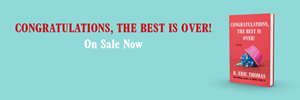The Art of Communication: Navigating Relationships in a Complex World
October 17, 2024, 5:21 am
In the intricate tapestry of human relationships, communication serves as the thread that binds us. Yet, many find themselves tangled in misunderstandings, assumptions, and unspoken expectations. Two recent letters to an advice column highlight the challenges of navigating these waters, particularly in the realms of family dynamics and intimate relationships.
The first letter comes from a woman living with her fiancé and his children. She feels overwhelmed by the household chores, particularly the dishes. Despite her long work hours, she finds herself cleaning up after others who are capable of doing so themselves. The second letter discusses the nuances of intimacy in relationships, especially for those facing challenges like erectile dysfunction (ED).
Both scenarios underscore a common theme: the importance of clear communication. In the first case, the woman’s frustration stems from a lack of dialogue about household responsibilities. She entered a pre-existing situation without a clear understanding of her role. It’s like stepping into a dance without knowing the steps. The rhythm is off, and she’s left to lead alone.
The advice given suggests she confronts her fiancé about the imbalance. It’s crucial to establish boundaries and expectations. Each person in a relationship must understand their role. Otherwise, resentment builds like a pressure cooker waiting to explode.
Similarly, the second letter reveals the complexities of intimacy beyond physical acts. Many individuals, particularly postmenopausal women, seek connection without the expectation of intercourse. This letter highlights the need for open discussions about desires and limitations. Just as a garden flourishes with the right conditions, relationships thrive on honesty and vulnerability.
The advice column encourages exploration of alternative forms of intimacy. This approach opens doors to new experiences and connections. It’s a reminder that love can be expressed in myriad ways, not confined to traditional norms.
Both letters illustrate the necessity of dialogue. In the first case, the woman must voice her feelings to her fiancé. In the second, individuals must communicate their needs and desires openly. Silence breeds assumptions, and assumptions can lead to conflict.
Consider the metaphor of a ship at sea. Without a clear course, it drifts aimlessly, subject to the whims of the wind and waves. Similarly, relationships without direction can falter. Establishing a shared vision and understanding is essential for navigating the journey together.
In the realm of family dynamics, the challenge often lies in blending different lifestyles and expectations. The woman in the first letter faces a household where the norms have not been established. It’s akin to mixing oil and water; without proper emulsification, chaos ensues.
Her fiancé must step up as a leader, guiding his family toward shared responsibilities. This requires a candid conversation about expectations and contributions. It’s not just about doing the dishes; it’s about fostering a sense of community and respect within the home.
On the other hand, the second letter reveals the delicate nature of intimacy. The fear of rejection or misunderstanding can stifle honest conversations. Yet, as the advice suggests, exploring alternative expressions of affection can lead to deeper connections.
Imagine a painter with a palette of colors. Each hue represents a different way to express love and intimacy. By mixing these colors, a beautiful masterpiece emerges. Relationships can be the same. When partners are willing to explore and communicate, they create a vibrant tapestry of connection.
Both scenarios also highlight the role of external influences. In the first letter, the woman feels disrespected by her fiancé’s children. In the second, unsolicited opinions about medical choices create tension. These outside voices can complicate matters, leading to confusion and frustration.
It’s essential to filter out noise and focus on what truly matters. In relationships, this means prioritizing the bond between partners over external judgments. Each couple must define their path, free from the weight of others’ expectations.
In conclusion, the art of communication is vital in navigating the complexities of relationships. Whether addressing household responsibilities or exploring intimacy, open dialogue is key. It’s about creating a safe space for expression, where both partners feel heard and valued.
As we move through life, let’s remember that relationships are not static. They require nurturing, understanding, and, most importantly, communication. Like a well-tended garden, they flourish when given the right attention. So, let’s embrace the challenge, speak our truths, and cultivate connections that enrich our lives.
The first letter comes from a woman living with her fiancé and his children. She feels overwhelmed by the household chores, particularly the dishes. Despite her long work hours, she finds herself cleaning up after others who are capable of doing so themselves. The second letter discusses the nuances of intimacy in relationships, especially for those facing challenges like erectile dysfunction (ED).
Both scenarios underscore a common theme: the importance of clear communication. In the first case, the woman’s frustration stems from a lack of dialogue about household responsibilities. She entered a pre-existing situation without a clear understanding of her role. It’s like stepping into a dance without knowing the steps. The rhythm is off, and she’s left to lead alone.
The advice given suggests she confronts her fiancé about the imbalance. It’s crucial to establish boundaries and expectations. Each person in a relationship must understand their role. Otherwise, resentment builds like a pressure cooker waiting to explode.
Similarly, the second letter reveals the complexities of intimacy beyond physical acts. Many individuals, particularly postmenopausal women, seek connection without the expectation of intercourse. This letter highlights the need for open discussions about desires and limitations. Just as a garden flourishes with the right conditions, relationships thrive on honesty and vulnerability.
The advice column encourages exploration of alternative forms of intimacy. This approach opens doors to new experiences and connections. It’s a reminder that love can be expressed in myriad ways, not confined to traditional norms.
Both letters illustrate the necessity of dialogue. In the first case, the woman must voice her feelings to her fiancé. In the second, individuals must communicate their needs and desires openly. Silence breeds assumptions, and assumptions can lead to conflict.
Consider the metaphor of a ship at sea. Without a clear course, it drifts aimlessly, subject to the whims of the wind and waves. Similarly, relationships without direction can falter. Establishing a shared vision and understanding is essential for navigating the journey together.
In the realm of family dynamics, the challenge often lies in blending different lifestyles and expectations. The woman in the first letter faces a household where the norms have not been established. It’s akin to mixing oil and water; without proper emulsification, chaos ensues.
Her fiancé must step up as a leader, guiding his family toward shared responsibilities. This requires a candid conversation about expectations and contributions. It’s not just about doing the dishes; it’s about fostering a sense of community and respect within the home.
On the other hand, the second letter reveals the delicate nature of intimacy. The fear of rejection or misunderstanding can stifle honest conversations. Yet, as the advice suggests, exploring alternative expressions of affection can lead to deeper connections.
Imagine a painter with a palette of colors. Each hue represents a different way to express love and intimacy. By mixing these colors, a beautiful masterpiece emerges. Relationships can be the same. When partners are willing to explore and communicate, they create a vibrant tapestry of connection.
Both scenarios also highlight the role of external influences. In the first letter, the woman feels disrespected by her fiancé’s children. In the second, unsolicited opinions about medical choices create tension. These outside voices can complicate matters, leading to confusion and frustration.
It’s essential to filter out noise and focus on what truly matters. In relationships, this means prioritizing the bond between partners over external judgments. Each couple must define their path, free from the weight of others’ expectations.
In conclusion, the art of communication is vital in navigating the complexities of relationships. Whether addressing household responsibilities or exploring intimacy, open dialogue is key. It’s about creating a safe space for expression, where both partners feel heard and valued.
As we move through life, let’s remember that relationships are not static. They require nurturing, understanding, and, most importantly, communication. Like a well-tended garden, they flourish when given the right attention. So, let’s embrace the challenge, speak our truths, and cultivate connections that enrich our lives.


